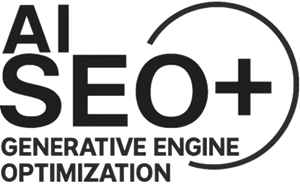SEO vs Paid Ads: Which One is Right for Your Business in 2025?

In the digital world of 2025, businesses face a crucial decision when planning their online marketing strategy: Should you invest in SEO for long-term organic growth, or use paid ads for instant visibility? Both approaches have their strengths, but the right choice depends on your business goals, budget, and timeline.
This guide will help you understand the differences between SEO and paid ads, weigh their pros and cons, and decide which strategy fits your business best in 2025.
What Is SEO?
Search Engine Optimization (SEO) is the process of improving your website’s visibility in organic (non-paid) search engine results. It involves optimizing your site’s content, structure, and technical aspects to rank higher for relevant keywords.
Key Benefits of SEO:
- Cost-Effective: Once your site ranks well, you get free traffic without paying per click.
- Long-Term Results: SEO builds authority over time and delivers sustainable growth.
- Higher Trust: Users tend to trust organic results more than ads.
Challenges: SEO takes time to show results and requires continuous effort to maintain rankings.
What Are Paid Ads?
Paid advertising involves paying for visibility on search engines (like Google Ads) or social media platforms (like Facebook, Instagram, and LinkedIn). You bid on keywords or target audiences to display your ads to potential customers.
Key Benefits of Paid Ads:
- Instant Visibility: Your website appears at the top of search results as soon as your campaign starts.
- Precise Targeting: Reach users based on location, demographics, interests, and behavior.
- Scalable: You can increase or decrease your budget based on performance.
Challenges: Paid ads can become expensive over time, and traffic stops when you stop paying.
SEO vs Paid Ads: Key Differences
| Aspect | SEO | Paid Ads |
|---|---|---|
| Cost | Free clicks but requires investment in content and optimization. | Pay for every click or impression (PPC). |
| Time to Results | 3-6 months for noticeable results. | Instant traffic as soon as ads go live. |
| Longevity | Sustainable long-term traffic. | Traffic stops when you pause the campaign. |
| Trust Factor | Higher trust among users. | Often labeled as “Sponsored” which some users avoid. |
| Maintenance | Requires consistent effort to maintain rankings. | Requires ongoing budget to keep ads running. |
Which One Should You Choose?
The right choice depends on your business type, goals, and resources.
When to Choose SEO:
- You want long-term, sustainable growth.
- Your budget is limited but you can invest time and effort.
- You aim to build brand authority and trust.
When to Choose Paid Ads:
- You need quick results or want to promote a time-sensitive offer.
- You have a larger marketing budget.
- You want to target specific customer segments precisely.
Best Strategy in 2025: For most businesses, a combination of SEO and paid ads works best. SEO builds a strong foundation, while paid ads provide immediate results and complement organic efforts.
How SEO and Paid Ads Can Work Together
Combining SEO and paid ads creates a powerful marketing strategy.
Benefits of Combining Both:
- Use paid ads to drive traffic while SEO efforts are gaining traction.
- Retarget visitors who found you organically with paid campaigns.
- Test high-performing keywords with paid ads before targeting them with SEO.
This hybrid approach gives your business the best of both worlds.
Final Thoughts
Both SEO and paid ads offer unique benefits, and the right choice depends on your business needs and goals. SEO is ideal for long-term growth, while paid ads provide instant visibility and faster conversions.
To grow your business in 2025, consider leveraging both strategies for maximum impact.
Need help deciding between SEO and paid ads for your business? At SEO PLUS GEO, we create custom strategies that combine the power of organic and paid marketing to deliver exceptional results.
